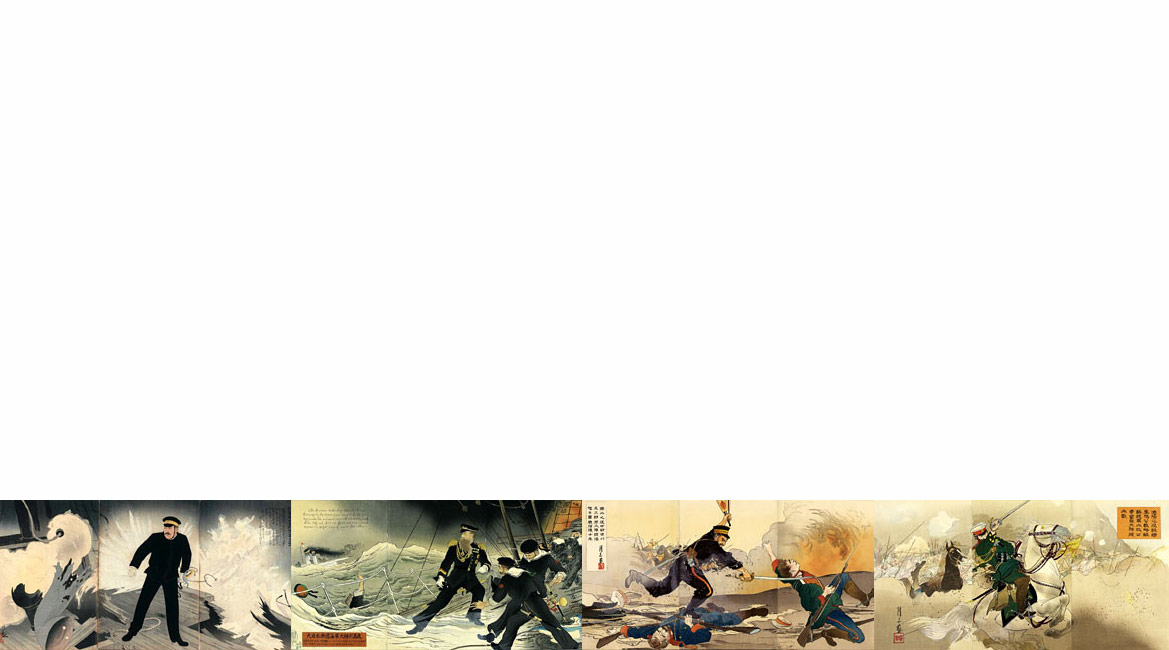
Scholars attentive to the depiction of “self” and “others” in Japanese war prints often point to a conspicuous difference in representations of the enemy in woodblocks of the Sino-Japanese War of 1894 to 1895 and the Russo-Japanese War 10 years later.
Where the Chinese enemy was concerned, straight-forward and even heroic figures did appear in the prints. More often than not, however, the Chinese were portrayed as backward and inept compared to the disciplined Japanese. More striking yet, the Chinese were usually caricatured as an entirely different race as well as culture. There was no sense of a shared Asian identity. In war prints including Chinese, Japanese, and Westerners, the Japanese resemblance to Westerners in almost every way is obvious.
Prints of the Russo-Japanese War reinforce this impression. While the Russian foe is often depicted being routed and humiliated, there still remains a sense of close similarity between the two sides—not only in uniform and battlefield behavior, but even in overall physical features. Additionally, the Russo-Japanese War prints include some conspicuously “heroic” renderings of the Russian foe.
This intriguing and almost literal identification with Westerners and “the West” was the opposite side of the popular notion that Japan had to “throw off Asia” in order to survive and prosper as a modern nation.

